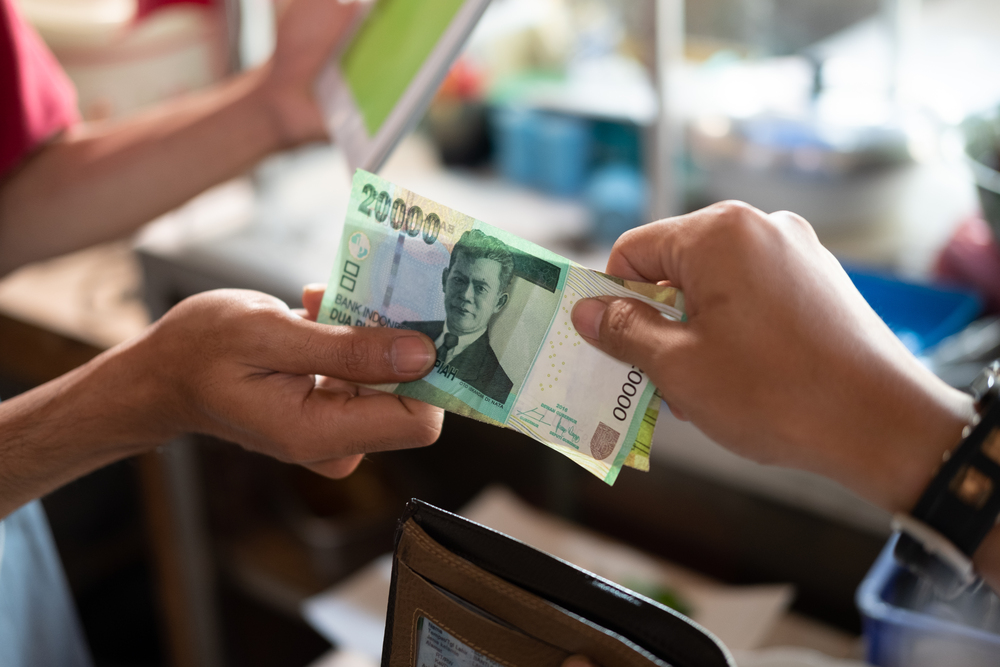Middle-income trap is an economic term that is often used when discussing the country's economic conditions.
This term describes how a country experiences a stagnation phenomenon that makes it difficult for the country to increase its per capita income.
For those who work in the field of economics, this term may be very familiar to hear. However, for ordinary people, this term is something new and feels foreign.
So, what is the middle-income trap, and what strategies should be taken to overcome it? Let's have a look at the following explanation.
1. Definition of Middle Income Trap
The term middle income trap was first discussed by the World Bank (World Bank) in 2007 in a report entitled An East Asian Renaissance: Ideas for Economic Growth.
Literally, if translated into Indonesian, middle-income trap means 'Jebakan Pendapatan Kelas Menengah'. This term describes a situation where a country has succeeded in achieving economic improvement, namely being at the middle level but unfortunately stuck at the same level. As a result, the country is difficult to become a developed country or have a high income.
Broadly speaking, it can be concluded that countries trapped in the middle-income experience the phenomenon of stagnation in middle-class income and have not been able to reach new income groups due to various factors.
One of the factors causing the middle-income trap is the lack of competitiveness in the manufacturing sector. The loss of competitiveness in the manufacturing sector is considered worrisome from an economic point of view.
2. Causes of the Middle Income Trap
As previously mentioned, one of the causes of the middle-income trap to occur is the lack of competition in the industrial sector. However, there are other factors that contribute to this trap.
Some of the causes of the middle-income trap include the following.
2.1. Industrial / Manufacturing Sector
The manufacturing sector is thought to be the main cause of a country experiencing the middle-income trap.
This happens on the basis of 2 things. First, is the lack of research and development in the manufacturing sector which tends to depend on traditional activities and the use of lagging technology.
Second, is the existence of certain group interests that hinder the growth of the industrial sector. Among other things, there is resistance to the ongoing policy reform process.
2.2. Bureaucratic Imbalance
Bureaucracy has little or no influence on the rate of economic growth of a country. The reason is that an easy and efficient bureaucracy will help facilitate the community in carrying out economic activities.
Unfortunately, in a country with a middle-income trap between bureaucracy and economic growth, there is a fairly obvious imbalance.
This bureaucratic imbalance does not only occur internally where there is poor accountability in the form of corruption. However, it also occurs in external bureaucracies such as policies that include agreements with foreign or international parties.
2.3. Low Human Resources
The second factor is the low quality of human resources (HR). Low human resources will result in the birth of innovation and minimal creativity. This makes a country unable to compete with other countries and achieve a high level of productivity.
2.4. Uneven Infrastructure Development
Infrastructure development in Indonesia has not been evenly distributed and is still centered on the island of Java. This lack of access to infrastructure has the same impact on the low quality of human resources.
2.5. Economic Transformation
Economic transformation has contributed to the cause of the middle-income trap. This can happen because the economic transformation is quite costly.
For example, a new policy on the manufacturing sector in the sale and purchase of semi-finished goods for export. If this policy does not work well and the competition is competitive, it is not impossible that new problems will arise. One of them is the impact on macro-economic stability that has the potential to cause credit bubbles in the midst of investment.
3. Middle Income Trap Indicator
The indicators that determine the middle-income trap can change every year. This occurs following inflation, economic growth, and the population that affects the value of GNI (Gross National Income) per capita of each country.
The GNI value as of July 1, 2021, for the category of countries with high per-capita income, ranges from 4,000-13,000 US Dollars. From this value, we can conclude that countries that are included in the middle-income category have a GNI value below that number
4. Strategy to get out of the Middle Income Trap
Reporting from Kompas.com, Sri Mulyani, the Minister of Finance of the Republic of Indonesia, explained 4 strategies that the Indonesian state can do to escape the middle-income trap. The four strategies include:
4.1. Human Resources (HR)
HR is the main factor for a country to be developed. With the fulfillment of people's basic rights to knowledge and health, it will also have a good impact on the advancement of knowledge, productivity, innovation, research, science, and technology.
In addition, there is no dependence on natural resources (geography), and good institutional quality (institution).
4.2. Infrastructure development
Not only there but the infrastructure must be of good quality and appropriate.
The development of this infrastructure cannot only depend on the state or the state budget with limited resources, but the private sector will also take part in it.
4.3. Easy and Simple Bureaucracy
An easy, efficient, agile, and simple bureaucracy will help the smooth running of a country's economic activities. This is evident in developed countries or high income.
4.4. Digital-Based Economy
Switching from the conventional economic sector to the high technology-based economic sector. For example, digital-based economic activities.

Image Source: Pexels/Markus Spiske
5. The Challenge of Getting Out of the Middle Income Trap
Of the four strategies previously mentioned, there are also inhibiting factors that are a challenge for a country to get out of the middle-income trap. Especially when viewed from the side of the community or individual.
5.1. Consumptive
Conditions where income increases, lifestyle also increases. Impact on the difficulty in saving so that they do not have additional income or guarantees in the future.
5.2. Forget to Invest
Forgetting to invest has a similar effect to consumptive. Both of them do not set aside money for the sake of survival in the future.
5.3. Does Not Build Any Assets
Assets are one indicator that per capita income can increase. This is because existing assets can add to the value of the property or objects that we have.
5.4. Consumer Debt
An increase in income can result in an increase in consumer debt owned. This will make the individual concerned not have the opportunity to save or spend his money to buy assets.
BFI friends, that's the discussion regarding the middle-income trap. As a virtuous society, you can also help the government to get out of this phenomenon, one of which is entrepreneurship.
If you are interested in entrepreneurship and need capital with quick and easy disbursement, you can apply for a loan to BFI Finance!
Other information and conditions related to loan applications through BFI Finance can be accessed at the link below.
Submission Information BPKB Motor Guarantee Loan
Submission Information Car BPKB Guarantee Loan
Submission Information Home Certificate Guarantee Loan
More interesting articles are available at BFI Blog.







